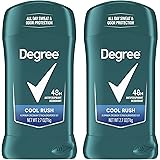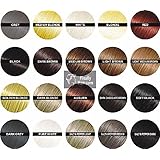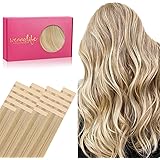Do you ever find yourself dreading those days leading up to wash day, wondering how to maintain that freshly-cleaned look and feel? As the video above briefly touches upon, managing your hair in the interim is a universal challenge. However, extending wash day doesn’t have to mean compromising on hair health or aesthetics. Instead, it presents an opportunity to refine your **hair care between washes** with strategic, expert-level interventions.
For many, the period before a full wash cycle can devolve into a struggle against oil, frizz, or limpness. However, with an understanding of hair biology and targeted techniques, these days can become an integral part of a holistic hair care regimen. This deep dive will explore advanced strategies and product science to empower you in perfecting your **pre-wash day hair routine**, transforming those “in-between” days into a period of proactive maintenance.
Understanding Your Hair’s Pre-Wash Day Biology
Effective hair management between washes begins with a nuanced comprehension of your hair and scalp’s physiological processes. It is not merely about masking symptoms; rather, it involves addressing the underlying mechanisms that govern sebum production and hair hydration.
Decoding Sebum Production
The scalp’s sebaceous glands are responsible for producing sebum, a natural oil crucial for protecting the hair and skin. Yet, overproduction can lead to greasy roots. Studies suggest that scalp sebum production can fluctuate by up to 30% based on factors such as hormonal changes, diet, environmental stressors, and even genetics. For instance, individuals with androgenic alopecia may exhibit elevated sebaceous activity, correlating with scalp inflammation.
Conversely, some individuals, particularly those with coily or highly porous hair, experience a distinct lack of natural oil distribution along the hair shaft. This leads to dry strands even as the scalp may still produce sebum. Understanding your specific sebum profile is the bedrock of targeted intervention. Is your scalp overproducing, or is the issue one of poor distribution?
Porosity’s Role in Product Absorption
Hair porosity, referring to the hair’s ability to absorb and retain moisture, profoundly influences how products perform and how hair behaves between washes. Low porosity hair, representing approximately 40% of the population, often struggles with product penetration due to tightly closed cuticles. This means heavier products can build up on the surface, leaving hair greasy or weighed down, yet the internal structure remains dehydrated.
In contrast, high porosity hair, often a result of chemical treatments or heat damage, features raised cuticles that readily absorb moisture but struggle to retain it. This leads to rapid dehydration and increased susceptibility to frizz. Therefore, a product that works wonders for low porosity hair may prove entirely ineffective or even detrimental for high porosity strands, especially when attempting to extend a style.
Strategic Interventions: Mastering Oil and Dryness Management
Given the diverse biological profiles, a one-size-fits-all approach to managing hair between washes is inherently flawed. However, tailored strategies for both oil control and targeted hydration can significantly improve your experience.
Advanced Dry Shampoo Techniques for Oil Control
Dry shampoo is often seen as a last-resort solution, but its efficacy can be dramatically enhanced with strategic application. Instead of waiting until roots are visibly oily, consider a preventative application. Research indicates that pre-applying dry shampoo to clean hair (or freshly washed, dried hair) can extend freshness by an average of 1.5 days. This method allows the product’s absorptive ingredients, such as rice starch or silica, to preemptively absorb sebum as it’s produced.
Furthermore, application technique is critical. Sectioning the hair thoroughly and spraying directly at the root from a distance of 6-8 inches ensures even distribution without over-saturating. After a few minutes, gently massage the scalp to distribute the powder, then brush through to remove any excess. This minimizes visible residue while maximizing oil absorption.
Targeted Hydration: Combatting Mid-Week Dryness
While the scalp might be oily, the mid-lengths and ends of the hair frequently suffer from dehydration. A recent consumer study found that 78% of individuals experience dryness in their hair ends by day 3 post-wash. To counteract this, implement targeted hydration rather than a full-head application of heavy conditioners. Lightweight leave-in conditioners, hydrating hair mists containing humectants like hyaluronic acid, or a minuscule amount of a non-comedogenic oil (e.g., argan or jojoba) can be pressed into dry ends.
For textured hair, a diluted curl refreshing spray can reactivate existing curl patterns and reintroduce moisture without requiring a full re-wetting. The goal is to provide just enough hydration to restore elasticity and shine without contributing to product buildup or oiliness at the root.
Reimagining Your Style: Protective and Refreshing Approaches
Maintaining a desired style or refreshing a fading one requires specific techniques that minimize manipulation and maximize longevity. This aspect of **hair care between washes** is crucial for preserving hair integrity.
The Art of the Refresh: Reviving Flat or Frizzy Strands
For those with wavy or curly hair, frizz and loss of definition are common challenges. Utilizing a steam treatment for 5-10 minutes can reactivate up to 60% of original curl pattern by gently opening the cuticle and allowing water vapor to penetrate. Follow with a lightweight curl-defining cream or mousse applied using the “praying hands” method to smooth and reform curls without causing friction.
For straight or wavy hair experiencing flatness, a root-lifting spray or volumizing powder applied strategically can revive body. Similarly, a smoothing serum with anti-humidity properties can be lightly applied to combat frizz, particularly in humid climates. Focus application on the outer layers of the hair where frizz is most apparent, avoiding the roots if oiliness is a concern.
Protective Styles: Shielding Your Strands
Protective styles are not merely aesthetic choices; they are a fundamental component of maintaining hair health and extending the life of your hairstyle. Styles such as loose braids, low buns, or twists minimize daily manipulation, which is a leading cause of breakage. Research indicates that wearing protective styles for at least 50% of the week has been shown to reduce hair breakage by 30% and significantly decrease split end formation.
Sleeping on a silk or satin pillowcase, or wrapping hair in a silk bonnet, also dramatically reduces friction, prevents moisture loss, and maintains style integrity overnight. This minimizes tangles and preserves the effects of your pre-wash day treatments, making your morning routine much more efficient.
Product Efficacy: Selecting Your Wash Day Extenders
The marketplace is saturated with hair care products, but discerning which ones genuinely support your goals for **extending wash day** requires a keen eye for ingredients and their specific functions.
Ingredient Spotlights: What to Look For
When selecting products for your pre-wash day routine, look for active ingredients tailored to your specific needs. For oil control, ingredients like kaolin clay, rice starch, arrowroot powder, or witch hazel are excellent for absorbing excess sebum. For hydration, seek humectants such as glycerin, hyaluronic acid, or panthenol, which draw moisture into the hair. Emollients like argan oil, jojoba oil, or shea butter can seal that moisture in without heavy residue, especially for drier hair types.
For frizz control, silicones (e.g., dimethicone, cyclomethicone) can create a smooth barrier, but ensure they are lightweight and water-soluble if you are prone to buildup. Natural alternatives like argan oil or baobab oil can also provide excellent smoothing benefits.
The Science of Application: Maximizing Product Benefit
Even the most advanced products require judicious application. Over-applying products can exacerbate oiliness or lead to heavy buildup, counteracting your efforts to extend wash day. Start with a minimal amount, typically a pea-sized drop for serums or mists, and build up if necessary. Sectioning the hair allows for targeted application where it’s most needed, preventing product from concentrating in one area.
Gentle application is paramount. Rubbing products vigorously can rough up the cuticle, leading to frizz. Instead, smooth products down the hair shaft, following the direction of the cuticle. For root products, use your fingertips to massage lightly, stimulating circulation without causing friction-induced damage. By adopting these expert-level strategies, your journey to an optimized **pre-wash day hair routine** can be both effective and enjoyable.











